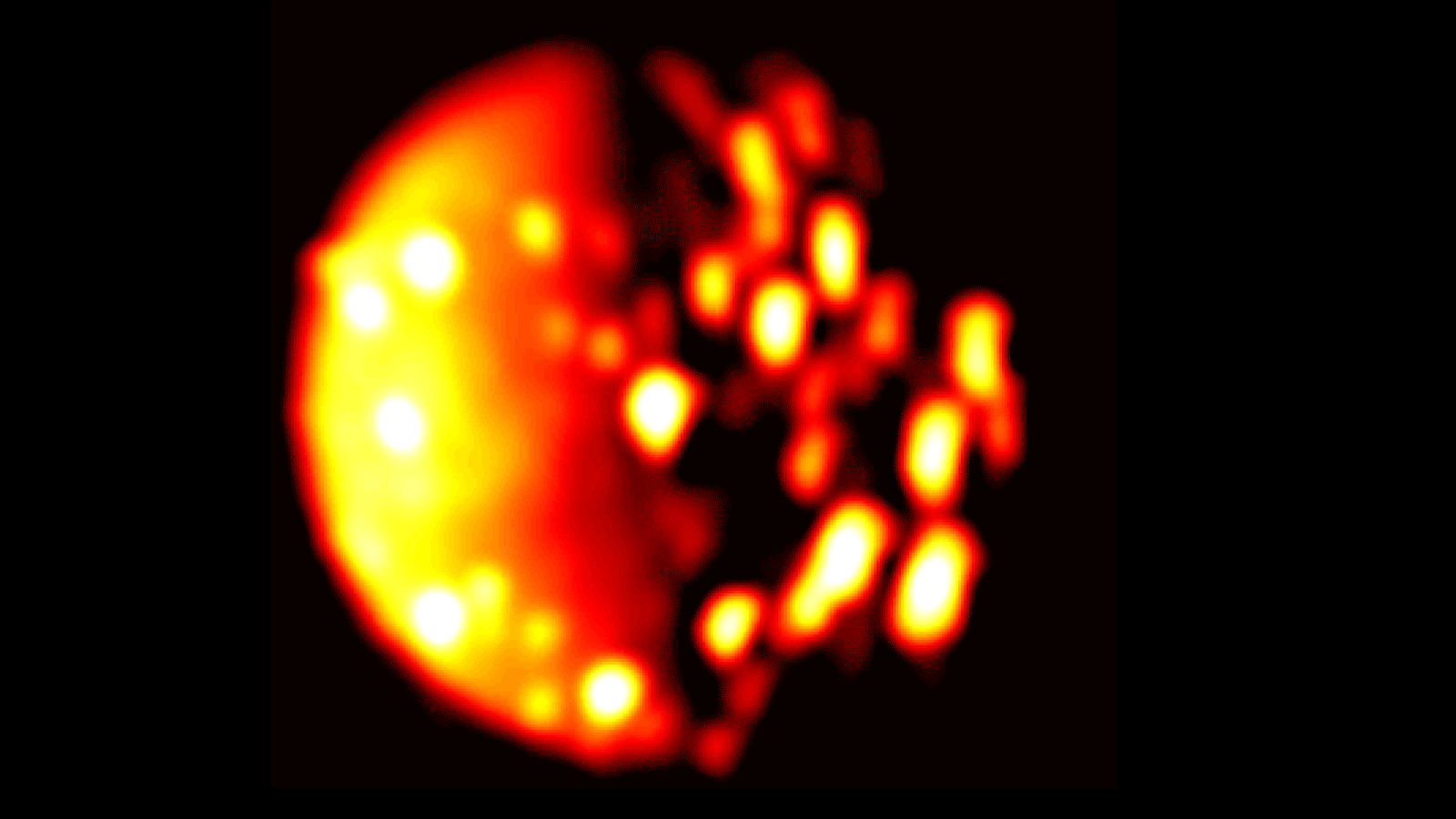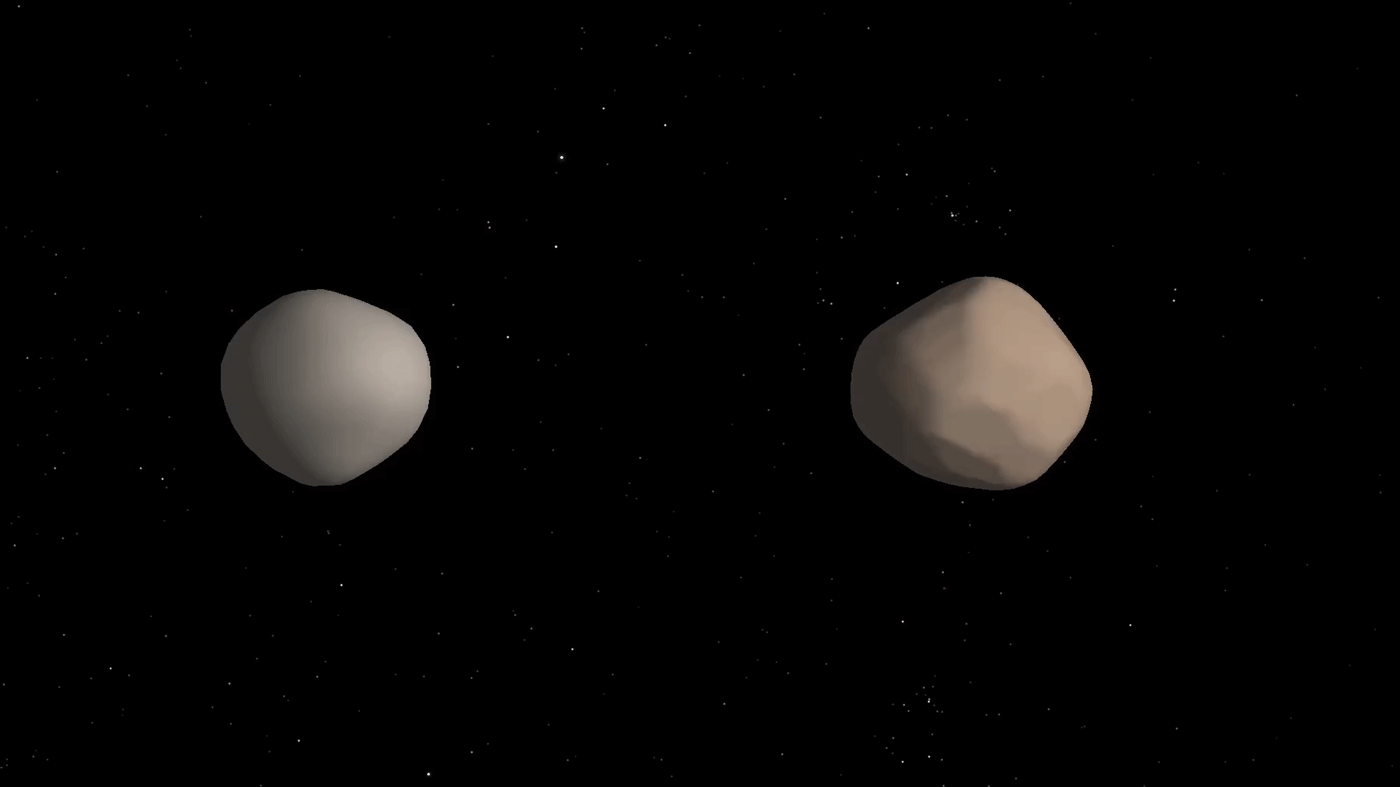This image captures a high-altitude cloud formation surrounded by swirling patterns in the atmosphere of Jupiter's North North Temperate Belt region.
Nasa’s James Webb Space Telescope will inspect the atmospheres of distant gas giants
The James Webb Space Telescope is like the party of the century that keeps getting postponed. Due to its sheer complexity and some anomalous readings that were detected during vibration testing, the launch date of this telescope has been pushed back many times – it is currently expected to launch sometime in 2021. But for obvious reasons, NASA remains committed to seeing this mission through.
New VLT Adaptive Optics Generarte Super-Crisp Images of Neptune Showing How Far Our Telescopes Have Come
ESO’s Very Large Telescope (VLT) has achieved first light with a new adaptive optics mode called laser tomography — and has captured remarkably sharp test images of the planet Neptune, star clusters and other objects. The pioneering MUSE instrument in Narrow-Field Mode, working with the GALACSI adaptive optics module, can now use this new technique to correct for turbulence at different altitudes in the atmosphere. It is now possible to capture images from the ground at visible wavelengths that are sharper than those from the NASA/ESA Hubble Space Telescope. The combination of exquisite image sharpness and the spectroscopic capabilities of MUSE will enable astronomers to study the properties of astronomical objects in much greater detail than was possible before.
NASA simulation shows how Europa’s “fossil ocean” rises to the surface over time
In the 1970s, the Jupiter system was explored by a succession of robotic missions, beginning with the Pioneer 10 and 11 missions in 1972/73 and the Voyager 1 and 2 missions in 1979. In addition to other scientific objectives, these missions also captured images of Europa’s icy surface features, which gave rise to the theory that the moon had an interior ocean that could possibly harbor life.
NASA Juno Data Indicate Another Possible Volcano on Jupiter Moon Io
Data collected by NASA’s Juno spacecraft using its Jovian InfraRed Auroral Mapper (JIRAM) instrument point to a new heat source close to the south pole of Io that could indicate a previously undiscovered volcano on the small moon of Jupiter. The infrared data were collected on Dec. 16, 2017, when Juno was about 290,000 miles (470,000 kilometers) away from the moon.
New insights into what might have smashed Uranus over onto its side
The gas/ice giant Uranus has long been a source of mystery to astronomers. In addition to presenting some thermal anomalies and a magnetic field that is off-center, the planet is also unique in that it is the only one in the Solar System to rotate on its side. With an axial tilt of 98°, the planet experiences radical seasons and a day-night cycle at the poles where a single day and night last 42 years each.
Instead of building single monster scopes like james webb, what about swarms of space telescopes working together?
In the coming decade, a number of next-generation instruments will take to space and begin observing the Universe. These will include the James Webb Space Telescope (JWST), which is likely to be followed by concepts like the Large Ultraviolet/Optical/Infrared Surveyor (LUVOIR), the Origins Space Telescope (OST), the Habitable Exoplanet Imager (HabEx) and the Lynx X-ray Surveyor.
Juno data shows that some of jupiter’s moons are leaving “footprints” in its aurora
Since it arrived in orbit around Jupiter in July of 2016, the Junomission has been sending back vital information about the gas giant’s atmosphere, magnetic field and weather patterns. With every passing orbit – known as perijoves, which take place every 53 days – the probe has revealed things about Jupiter that scientists will rely on to learn more about its formation and evolution.
Method of making oxygen from water in zero gravity raises hope for long-distance space travel!
Observatories Team Up to Reveal Rare Double Asteroid
NASA’s Fermi Traces Source of Cosmic Neutrino to Monster Black Hole
For the first time ever, scientists using NASA’s Fermi Gamma-ray Space Telescope have found the source of a high-energy neutrino from outside our galaxy. This neutrino traveled 3.7 billion years at almost the speed of light before being detected on Earth. This is farther than any other neutrino whose origin scientists can identify.
'X'-ploring the Eagle Nebula and 'Pillars of Creation'
Curious Kids: Where do black holes lead to?
2019 Total Solar Eclipse Event at ESO’s La Silla Observatory in Chile
On 2 July 2019 one of nature’s most impressive phenomena will be visible from ESO’s La Silla Observatory in Chile — a total solar eclipse. As these are very rare — the next one visible from La Silla will occur in 212 years — ESO is organizing a campaign of observing and outreach activities on site, allowing the general public to experience this spectacular event. Tickets to participate will be available from 13:00 CEST/07:00 CLT on Friday 13 July 2018.
Burst of Celestial Fireworks
Like a July 4 fireworks display, a young, glittering collection of stars resembles an aerial burst. The cluster is surrounded by clouds of interstellar gas and dust - the raw material for new star formation. The nebula, located 20,000 light-years away in the constellation Carina, contains a central cluster of huge, hot stars, called NGC 3603.
Amazing: First Confirmed Image of Newborn Planet Caught with ESO’s VLT
SPHERE, a planet-hunting instrument on ESO’s Very Large Telescope, has captured the first confirmed image of a planet caught in the act of forming in the dusty disc surrounding a young star. The young planet is carving a path through the primordial disc of gas and dust around the very young star PDS 70. The data suggest that the planet’s atmosphere is cloudy.
Oumuamua accelerated out of the solar system like a comet
On October 19th, 2017, the Panoramic Survey Telescope and Rapid Response System-1 (Pan-STARRS-1) telescope in Hawaii announced the first-ever detection of an interstellar asteroid – I/2017 U1 (aka. ‘Oumuamua). Originally though to be a comet, follow-up observations conducted by the European Southern Observatory (ESO) and others confirmed that ‘Oumuamua was actually a rocky body that had originated outside of our Solar System.
Complex organic molecules are bubbling up from inside Enceladus
The Cassini orbiter revealed many fascinating things about the Saturn system before its mission ended in September of 2017. In addition to revealing much about Saturn’s rings and the surface and atmosphere of Titan (Saturn’s largest moon), it was also responsible for the discovery of water plumes coming from Enceladus‘ southern polar region. The discovery of these plumes triggered a widespread debate about the possible existence of life in the moon’s interior.
NASA Uses Earth as Laboratory to Study Distant Worlds
The study of exoplanets -- planets that lie outside our solar system -- could help scientists answer big questions about our place in the universe, and whether life exists beyond Earth. But, these distant worlds are extremely faint and difficult to image directly. A new study uses Earth as a stand-in for an exoplanet, and shows that even with very little light -- as little as one pixel -- it is still possible to measure key characteristics of distant worlds.
A satellite with a harpoon, net and drag sail to capture space junk is in orbit and will be tested soon
After almost seventy years of spaceflight, space debris has become a rather serious problem. This junk, which floats around in Low Earth Orbit (LEO), consists of the spent first rocket stages and non-functioning satellites and poses a major threat to long-term missions like the International Space Station and future space launches. And according to numbers released by the Space Debris Office at the European Space Operations Center (ESOC), the problem is only getting worse.




















